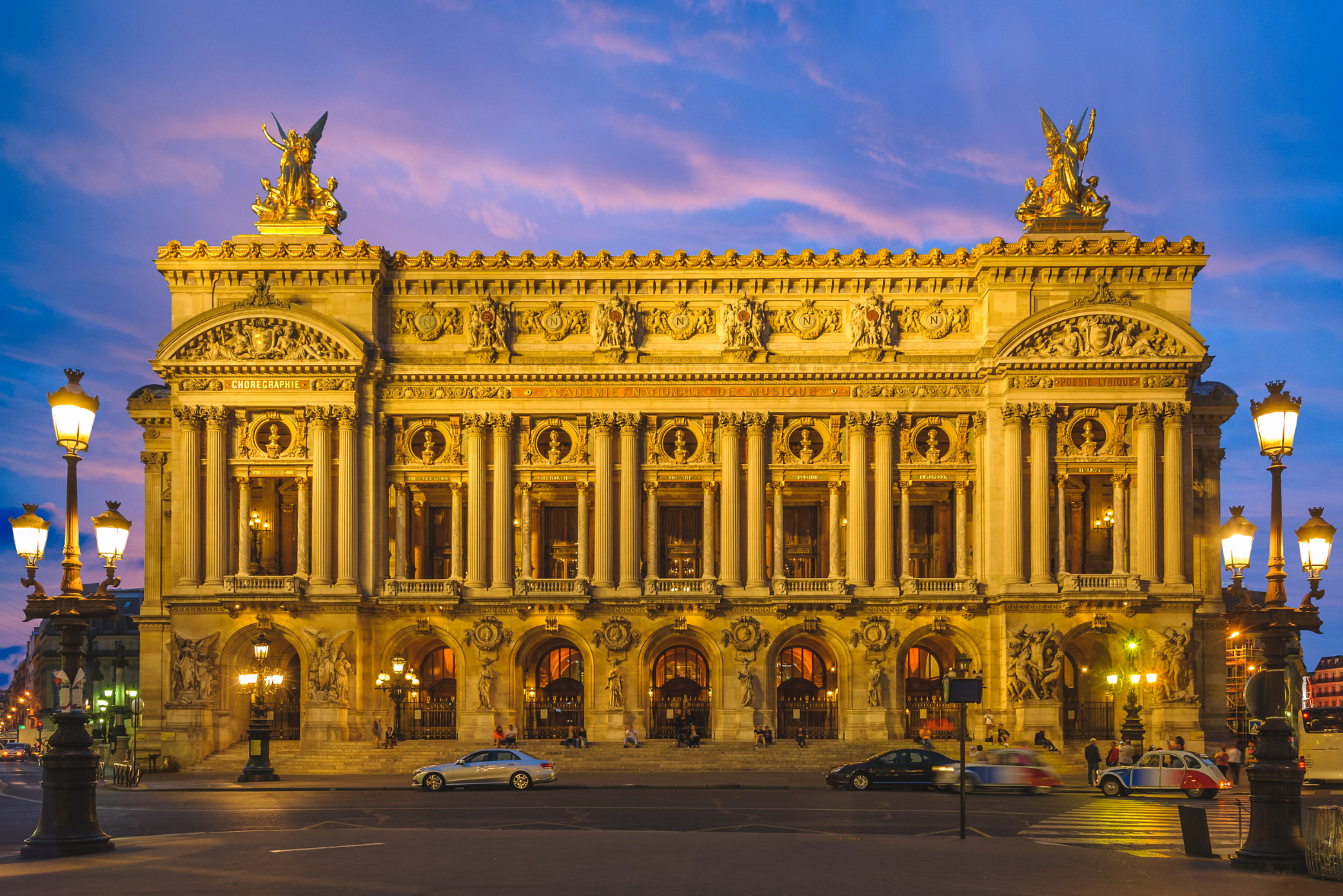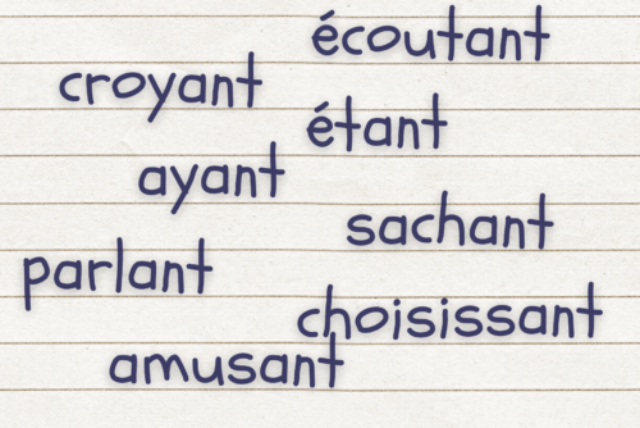The twelve most famous landmarks in France
Posted by Josh on 17th Apr 2023 in the blog in the french culture category
Perhaps more than any other country on the planet, France is known for its landmarks: buildings, monuments, bridges and other imposing structures that have historical significance and are widely recognised throughout – and often beyond – l'Hexagone. If you ever find yourself in a corner shop in France, trying to choose a postcard to send back home, you’ll probably struggle to choose one, as there so many different landmarks that appear on them.
But there's no wrong choice, and each is important in its own way. Some have religious significance, while others are memorials or commemorative structures, and others are testaments to the engineering prowess of a bygone civilisation. So much of it is a matter of taste, which is why France even has a popular TV show which ranks French monuments according to their popularity as determined by Internet polls.
You won’t be surprised to learn that many of them are located in Paris. But the rest of France also boasts a very rich history, and wherever you go you’ll see it monumentalised in the form of landmarks such as those found in this list. These are all worth paying a visit, seeing for yourself and learning the history behind them – and discovering what makes them so famous in the first place.
The Eiffel Tower
The first landmark on this list needs no introduction. Built by Gustave Eiffel, the eponymous Eiffel Tower stands at the very centre of Paris, having been constructed as the centrepiece for the 1889 Exposition Universelle. Unlike the other buildings erected for the Exposition, however, the Eiffel Tower wasn't dismantled afterwards, and instead has remained in place ever since. Indeed, for over 40 years after its completion, it was the tallest building in the world, until it was dethroned by the Empire State Building.
When it was first constructed, the Eiffel Tower attracted a lot of controversy. Nowadays, however, it’s well-loved around the world, and considered Paris’ main attraction. It will be painted all gold for the Summer Olympics in Paris in 2024.
The Arc de Triomphe de l'Étoile
The Arc de Triomphe is the main feature of the Axe Historique, a line of monuments and thoroughfares which runs through the centre of Paris, and which includes l’Élysée, the Luxor Obelisk and the Palais des congrès. But the Arc is undoubtedly the most famous of these, and if you pay a visit to Paris, you’re sure to see people braving the roundabout at the centre of L'Etoille – the setting to an action-packed climax in the new John Wick 4 – to stand under the Arc and climb the steps to get a view down the Champs-Élysées.
Emperor Napoleon had the Arc built in 1806 to commemorate his victory at Austerlitz, although it took 30 years to complete. While it’s certainly striking from a distance, it is recommended to visit the Arc up close to see the sculptures, plaques and reliefs depicting Napoleonic battles, military leaders and political speeches in all their elegant detail.
The Palace of Versailles
The Palace of Versailles is a stunning, sprawling estate just outside of Paris, and is one of the most visited buildings in the world. You may have heard of the Treaty of Versailles, which brought World War One to an end and was signed in this building, but the history goes back much further.
The Palace was built by Louis XIII in 1623, although at the time it was merely a hunting lodge. Much of its construction took place under the reign of his son, Louis XIV 'The Sun King', during which period it became a place for the entertainment and leisure of the aristocracy. When the monarchy came to an end in the reign of Louis XVI, the king and his wife Marie Antoinette fled the palace to escape the revolutionaries – but unfortunately weren't able to escape Paris.
Nevertheless, the Palace has remained in use ever since, its various functions over the years including hosting a museum, serving as a historical tourist attraction and being the place where the famous Treaty of Versailles was signed.
Thiepval Memorial
The Thiepval Memorial is a memorial to the British and South African soldiers who were killed in the Battle of the Sommes and whose bodies were never recovered. It also commemorates the alliance between British and French troops in the joint offensive of 1916. It is one of best the places to get a real sense of the gravity and destruction of the First World War, especially as the Sommes was the site of some of the bloodiest warfare. The Memorial is a sobering structure, but is nonetheless a architectural marvel.
The Roman Theatre in Orange
Perhaps the oldest landmark on this list, the Roman Theatre in Orange in the south of France is two thousand years old. Being so ancient, it was inevitable that the theatre wouldn’t survive in its original state, and it has been stripped of its best stonework over the years. Nevertheless, it remains one of the best preserved Roman theatres around, partly thanks to a restoration process which began in 1825, and is still used for concerts and performances. It has been a UNESCO world heritage site since 1981.
Le Mont Saint Michel
To look at, you'd think Mont Saint Michel was straight from a fairy tale – it's no wonder it's served as the inspiration for so many settings in fantasy stories, from Minas Tirith in Peter Jackson's The Lord of the Rings films to the castle in Disney's Tangled.
What makes the Mount so iconic is that it is both a hill and a small island, and the beautiful romanesque abbey at the top of it dates back well over a thousand years. At low tide the water recedes, allowing pilgrims and tourists to cross a land bridge to the island, making it a highly defensible location.
Supposedly the abbey was constructed in the early 8th century when the Archangel Michael appeared to Aubert, the bishop of Avranches, and ordered him to build a church on the island. True or not, it seems to have been a good idea, since it's lasted all this time and become such an inspirational landmark in France.
You can visit its smaller counterpart, St Michael's Mount, in Cornwall, just across the English Channel.
Le pont D'avignon
While only four arches of this bridge survive, the Pont D’avignon is still an impressive sight. Built between 1177 and 1185, the bridge was destroyed during the siege of Avignon by King Louis VIII in the early 13th century. While it was then rebuilt, it later fell into disrepair again – a recurring theme among these landmarks, as you will see.
What’s most remarkable about the bridge is that it was built at a point in the river Rhône where the current was at its strongest. Echoing Archangel Michael's visit to Aubert of Avranches, the idea was conceived by a shepherd named Bénézet, who claimed that Jesus had visited him in a dream and ordered him to build the bridge there – which was convincing enough for the archbishop to have the bridge built, and for the Catholic Church to canonise Bénézet (or Saint Bénézet, as he's now known).
The bridge inspired a very famous nursery rhyme, 'Sur le pont d'Avignon'.
Le Pont du Gard
Like the Theatre of Orange, this monumental aqueduct is another Roman landmark that dates back to the 1st century AD. Consisting of three bridges on top of one another, the aqueduct stretches hundreds of metres across the Gardon River in the south of France. While it fell into dilapidation after the collapse of the Roman Empire, serious efforts to restore it began in the 19th century, and today it looks more or less as it would have two millennia ago, a sentiment voiced by the renowned novelist Henry James who remarked upon seeing it in 1884: 'When the vague twilight began to gather, the lonely valley seemed to fill itself with the shadow of the Roman name, as if the mighty empire were still as erect as the supports of the aqueduct.'
It's quite a sight to behold, and to this day inspires awe in those who look – or walk – upon it.
Le Palais Ideal
Reminiscent of Xanadu from the film Citizen Kane, the Palais Idéal strikes viewers as an anomaly in the architectural history of France. What style is it? Baroque? Postmodern? When was it made? Last year? Or before recorded history?
In fact the Palace was finished in 1912 and doesn't technically belong to any particular architectural style, as it was not built by an architectural firm but by a lone postman by the name of Ferdinand Cheval. During his postal rounds, he would pick up interesting-looking stones and take them to a site in the centre of Hauterives. Over the course of '10,000 days, 93,000 hours, 33 years of trials' (as it reads on an inscription on one side of the Palace), Cheval built the Palace into what it is today, largely as a paean to nature - the building is replete with statues and bas-reliefs of animals, mythical beasts and iconography inspired by the Garden of Eden.
While it's hard to classify the Palace as belonging to any particular style, one could argue that it became, in retrospect, a symbol of the Surrealism movement, as pioneers such as André Breton took huge inspiration from it. It's easy to see why.
Basilica of Saint Denis
The Basilica of Saint Denis is the first gothic building ever built, although its piecemeal development (and dilapidation) over the centuries means it's difficult to pinpoint an exact origin for the church. However, its history dates back to the death of St Denis, the first bishop of Paris, who was buried here.
It became the traditional resting place for the monarchs of France, 43 of which are buried there. But the Basilica is also known nowadays for its asymmetrical appearance, owing to a blast of lightning which struck and destroyed the tower on the left in 1837. It was quickly replaced, but the replacement only lasted a few years before collapsing under its own weight.
There are new plans to rebuild the tower, although it must be said that its distinct appearance is one of the factors – but certainly not the only one - that makes it such a well-known landmark.
The Palais Garnier
Built by the architect Charles Garnier between 1861 and 1875, the Palais Garnier is the home of the Royal Opera, and a stunning example of neoclassical architecture. Located in Paris' 9th arrondissement, it's featured in numerous books, films and other media, perhaps most famously The Phantom of the Opera.
Notre Dame Cathedral
French cathedrals seem to have a history of bad luck. You'll probably recall that in 2019 the building caught fire, although it has been largely repaired and will welcome visitors once again in 2024.
The cathedral is a beautiful example of Gothic architecture, both inside and outside, and houses a number of important religious relics, including the Crown of Thorns worn by Jesus at the crucifixion. Notre Dame is a remarkable feat of architecture, full of fascinating details, from the famous Rose Windows to the numerous decorative gargoyles adorning the eaves. And fans of Disney films are sure to recognise the Bell Tower from The Hunchback of Notre Dame.
Check out some of our other blog posts!
What is the 80/20 rule for studying French?
Posted on by Josh in the learning french categoryLearn how this equation helps you study more effectively
Read moreFrench present participles
Posted on by Josh in the french grammar categoryHow and when to use present participles in French
Read moreHave fun learning French Today
People from all over the world enjoy learning French with Alexa Polidoro’s popular French audio and video lessons.










